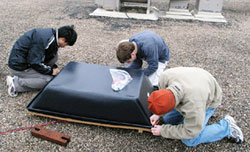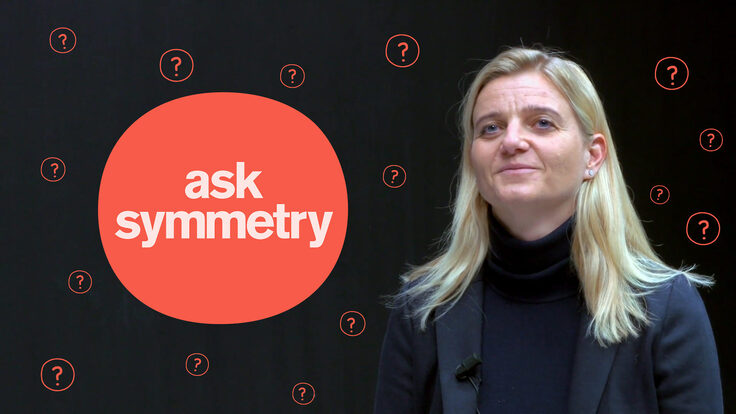 |
| From left: Anfei Li, Ben Nachman, and David Lynch brave the wind and cold to install a weather-resistant cover for a cosmic-ray detector on the roof of their high school in Nebraska. |
High schoolers catch some (cosmic) rays
Ben Nachman and several friends climbed out on the roof of Westside High School in Omaha, Nebraska, hauling a tangle of wires and what resembled a car-top luggage carrier. The high school juniors weren't pulling some elaborate prank. They were looking for a message hurled from the roiling heart of a distant galaxy.
"It was an ordeal," Nachman says of the frigid weekend adventure three years ago. "But it was awesome!"
Nachman and his friends were installing a cosmic-ray detector as a part of CROP, the Cosmic Ray Observatory Project.
University of Nebraska physics Professor Greg Snow and colleague Dan Claes dreamed up the project in the mid-nineties, when they learned the University of Chicago's Chicago Air Shower Array experiment was ending. The idea was to "recycle" the experiment's cosmic-ray detectors by giving them to high schools. The detectors were free, courtesy of the University of Chicago. Snow just had to pick them up from a remote Army base in the Utah desert.
Since then, more than 25 Nebraska schools have used the detectors as a dramatic teaching tool that offers students a taste of hands-on physics research.
"It's real science; we're collecting real data," says John Rogers, a physics teacher at Westside.
Jim Rynearson, who teaches at Lincoln High in Lincoln, says his students do university-level research: "They're asking questions about cosmic rays that nobody has the answers to. You can't go look it up somewhere."
Nachman, now a Cornell University sophomore, went from working with CROP to working with experiments at CERN's Large Hadron Collider. He says he hopes CROP will continue to grow.
"It definitely felt like we were doing something important," Nachman says. "I'm still interested in doing experimental physics, so it must have paid off."
Andrea Mustain
Click here to download the pdf version of this article.






